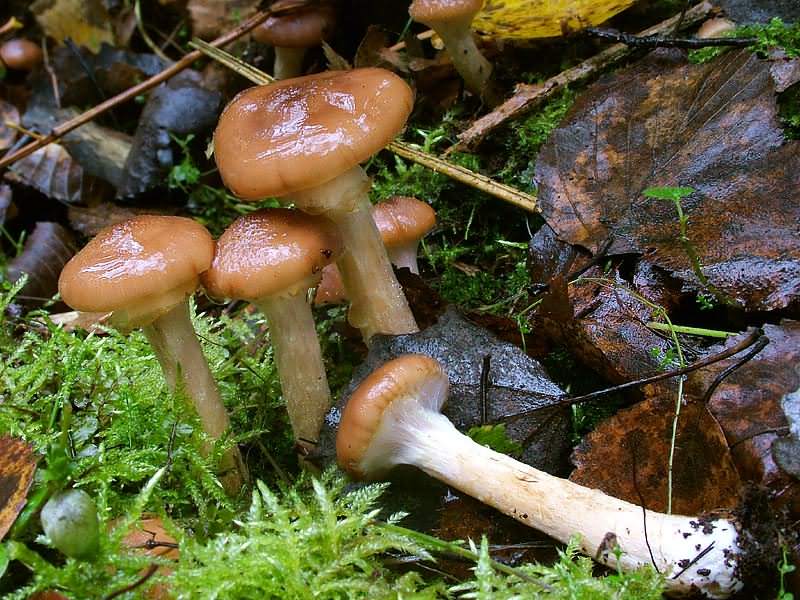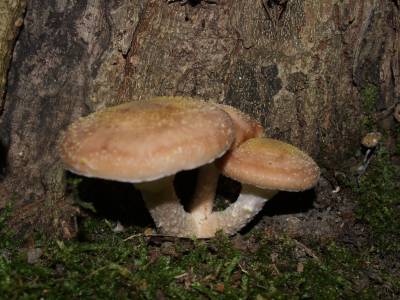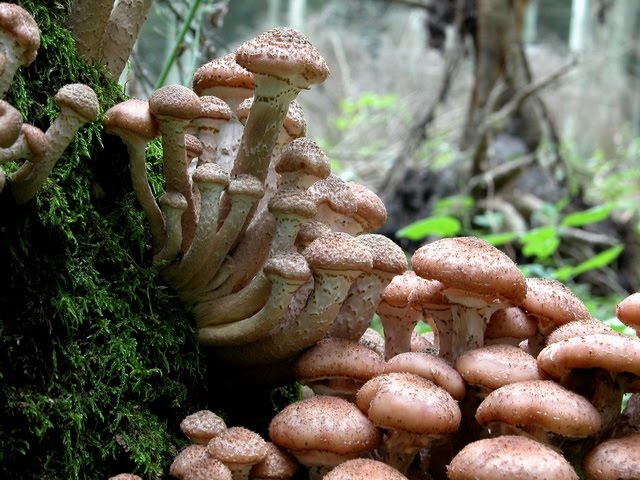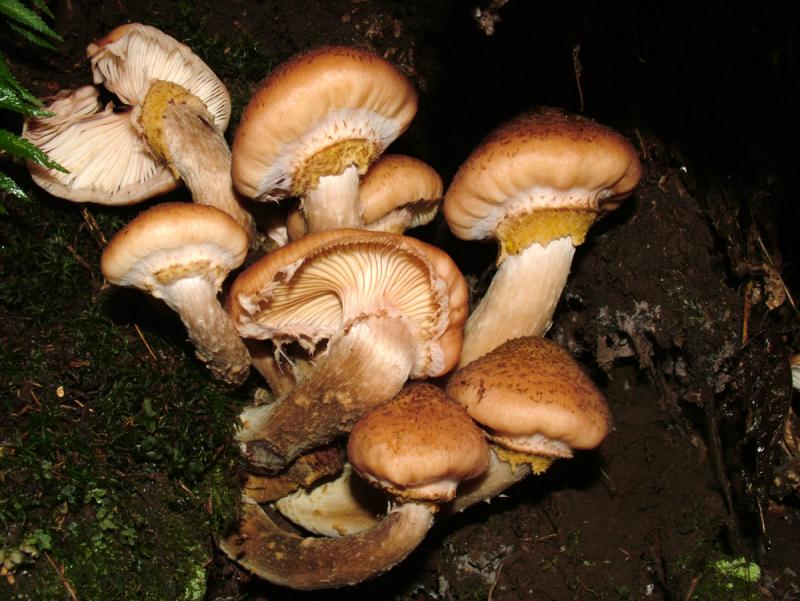Elite life

Mushrooms
Armillaria
║ Mushrooms ║
The Honey Fungus (Armillaria mellea)

Cap: 3-15 cm, convex to broadly convex or flat in age; the margin often arched in maturity; dry or tacky; color extremely variable, but typically honey yellow; smooth, or with a few tiny, dark scales concentrated near the center and vaguely radially arranged.
Gills: Attached or beginning to run down the stem; nearly distant; whitish, sometimes bruising or discoloring darker.
Stem: 5-20 cm long; .5-3.5 cm thick; tapering to base due to clustered growth pattern; tough and fibrous; smooth and pale near apex, darker and nearly hairy below; with a persistent ring at maturity and a white partial veil covering the gills when young.
Flesh: Whitish to watery tan.
Bulbous Honey Fungus (Armillaria gallica)

Cap 3-15 cm across, very variable, convex to shield shapped, yellow brown, tawny, to dark brown, often with an olivaceous tinge, covered in darker fibrillose scales especially at the centre. Stem 60-150×5-15 mm, often bulbous towards the base, yellowish becoming reddish-brown at the base, initially with a thick whitish to yellow cottony ring. Flesh white. Taste astringent, smell strong. Gills white at first then yellowish becoming pinkish-brown and often darker spotted with age. Spore print pale cream. Spores elliptic, 8-9 x 5-6 μm. Habitat in clusters on or around trunks or stumps of deciduous and coniferous treesor shrubs. Season summer to early winter. Very common. Edible when cooked but should only be eaten in small amounts as some forms are known to cause stomach upsets. Distribution, America and Europe.
Armillaria calvescens

Pileus tan to brown, with no scales, but a finely fibrillous surface that can be easily rubbed off, leaving a "mealy" texture between your fingers. Veil golden yellow, sometimes not easily observed, sometimes leaving fibrils on the stipe, which is often swollen at the base. Usually found on maple in southeastern Canada and New England, but also found on a variety of other hardwoods west to Michigan and Wisconsin. The mycelium of this species has also been found in the Canadian prairie provinces, although has not been observed fruiting there. Spore size 8.5-10.
Honey Mushroom, Shoestring Rot (Armillaria ostoyae)

The pileus is brown colored, covered by dark scales, and can be very large, up to 1 foot in diameter, especially in the Pacific Northwest. This is the species that has been reported to cause some people some gastrointestinal upset if collected from hemlock, but we believe that most of the reported upset is due to undercooking (and overeating) of some of these larger collection. Spore size 8-11 x 5.5-7 μm.
Armillaria sinapina
In the Northeast, the major morphological character that distinguishes this species from the others is the "presence of a golden yellow universal veil that covers young fruiting bodies and later leaves remnants consisting of yellow warts or lumps of tissue on the cap, a yellow fibrous annulus, and many patches of fibers on the stipe". However, we have not observed this yellow coloration on western specimens. Spore size 8.2-10 x 5.9-8 μm.
White Matsutake (Armillaria ponderosa)
Cap 5-20 cm across, convex becoming flatter with an inrolled, cottony margin becoming somewhat uplifted in age; white with flattened reddish-brownish scales and spots, particularly over the center; tacky becoming dry with streaks of brown fibers near the margin. Gills adnexed, crowded, narrow to broad; whitish staining pinkish brown. Stem 50-150 x 20-40 mm, hard, firm; white becoming pinkish brown from scales and patches of veil remnants; white and cottony above the ring. Veil partial veil leaves thick, soft, membranous ring on the upper stalk. Flesh firm; white. Odor distinctly fragrant. Spores broadly ellipsoid to globose, smooth, nonamyloid, 5-7 x 4.5-5.5 μm. Deposit white.
Armillaria zelleri

Cap 5-15 cm across, obtuse becoming flat or broadly convex with an umbo and an incurved, cottony margin; orange, brown, olive, and yellow mixed; slimy and minutely hairy. Gills actuate, close to crowded, narrow to moderately broad; whitish staining rusty brown. Stem 40-130 x 10-30 mm, tapering to a pointed base; white and cottony above ring, below ring the sheath breaking into orange scales and patches. Veil partial veil leaving membranous, ragged ring on upper stalk. Odor mealy, unpleasant. Taste mealy, unpleasant. Spores ellipsoid, smooth, nonamyloid, 4-5 x 3-4 μm. Deposit white.
║ Mushrooms ║